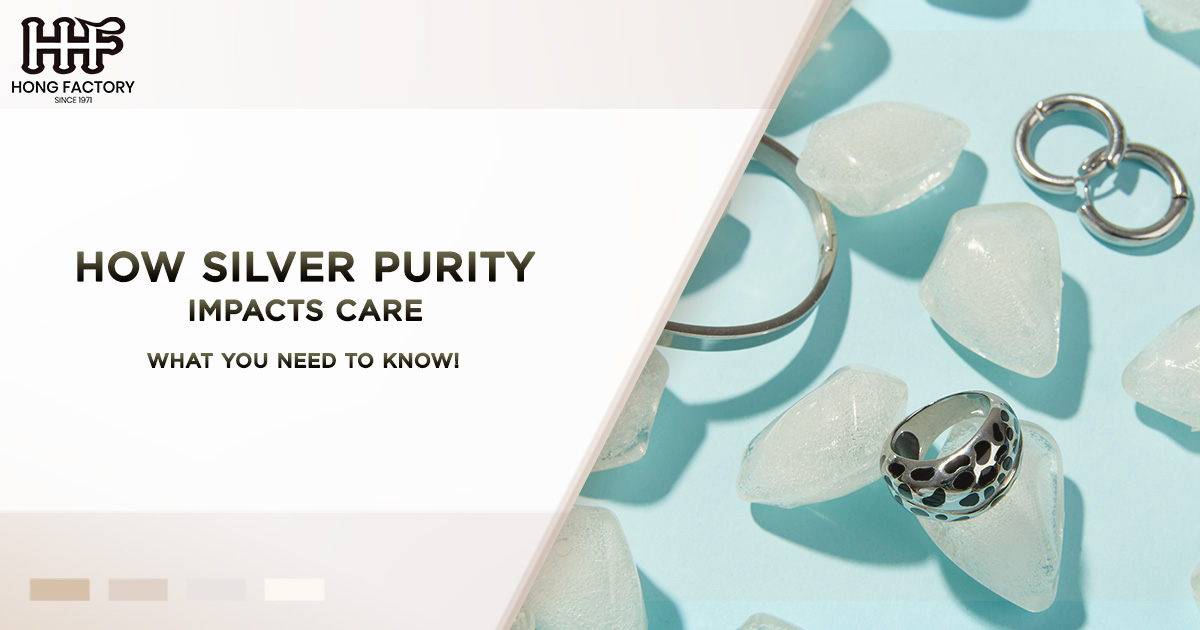When it comes to silver jewelry and household items, understanding the level of silver purity is essential. The purity of silver not only affects the value and appearance of the item but also its care and maintenance requirements. This article will delve into the different types of silver—namely sterling silver, fine silver, and silver alloys—and explain how varying levels of purity influence the way you should care for these precious items.
Understanding Silver Purity
Before diving into care requirements, it’s crucial to understand what silver purity means. Silver purity is a measure of how much actual silver is present in a particular item. Pure silver, represented as 99.9% silver, is often referred to as fine silver. Silver items with a lower percentage of pure silver are usually alloys, combining silver with other metals to improve hardness and durability.
Fine Silver (99.9% Silver)
Fine silver is the purest form of silver you can encounter, consisting of 99.9% silver. This high purity level gives fine silver its lustrous glow and hypoallergenic properties, making it ideal for sensitive skin. However, this purity comes with a trade-off : fine silver is quite soft and can be easily scratched or bent. Because of its softness, fine silver isn’t commonly used for everyday items that require durability, such as rings or bracelets.
Care for Fine Silver
The high purity of fine silver demands careful handling. Here are some key care tips :
- Avoid Scratches : Store fine silver separately in a soft pouch or lined jewelry box to prevent scratching.
- Prevent Tarnish : Although fine silver tarnishes less than sterling silver, it can still lose its shine over time. Keep it dry and store it in a cool, airtight environment.
- Gentle Cleaning : Use a soft cloth to clean fine silver. Avoid harsh chemicals and opt for mild soap and water when necessary.
- Limit Wear : Because of its softness, fine silver jewelry should not be worn during activities that may cause damage.
Sterling Silver (92.5% Silver)
Sterling silver is a popular choice for jewelry and decorative items due to its combination of beauty and strength. Consisting of 92.5% silver and 7.5% other metals, usually copper, sterling silver retains much of the elegance of fine silver while gaining additional durability.
Care for Sterling Silver
Sterling silver requires a bit more maintenance than fine silver to keep its shine and prevent tarnishing :
- Regular Polishing : Use a silver polishing cloth regularly to maintain its gleam. Polishing helps remove tarnish without scratching the surface.
- Avoid Moisture : Water can accelerate tarnishing, so remove sterling silver jewelry before swimming, bathing, or engaging in activities that cause perspiration.
- Proper Storage : Store sterling silver in anti-tarnish bags or cloths. Ensure it is kept in a dry place, away from chemicals and pollutants.
- Professional Cleaning : For intricate designs or heavy tarnish, consider professional cleaning services.
Silver Alloys
Silver alloys are mixtures of silver with other metals to achieve various properties like increased strength, durability, or a specific color. The care for silver alloys can vary significantly depending on the metals used in the alloy.
Care for Silver Alloys
- Know the Alloy : Understanding what metals are in the alloy helps determine the best care practices. Some alloys might react to water, humidity, or various substances.
- Gentle Cleaning : Always start with mild cleaning solutions. Avoid abrasive cleaners that might damage the finish or cause discoloration.
- Consistent Maintenance : Regular cleaning helps preserve the appearance and prevents tarnish.
- Store Correctly : As with other silver types, store silver alloys in a dry, cool place to minimize exposure to tarnishing agents.
Factors Affecting Silver Care
Tarnishing
Tarnishing is a natural chemical reaction that occurs when silver comes into contact with sulfur-containing substances in the air. While fine silver is less prone to tarnishing, all silver types, including sterling silver and alloys, require precautions to minimize tarnish :
- Environmental Conditions : High humidity and exposure to chemicals (like perfumes and lotions) can accelerate tarnishing. Keeping silver in a dry and controlled environment significantly helps in tarnish prevention.
- Regular Use : Surprisingly, wearing silver often can actually help prevent tarnish. The natural oils from your skin provide a barrier that slows down the tarnishing process.
Scratches and Damage
The softer the silver, the more prone to scratches and damage it is. While fine silver is at the highest risk due to its purity, sterling silver and silver alloys with certain compositions can also be susceptible. Here’s how to prevent damage :
- Separate Storage : Keep silver items separate from other jewelry to prevent scratching. Using dividers or individual pouches will help.
- Avoid Rough Activities : Remove silver items when engaging in activities that could cause scratches, dents, or exposure to harsh chemicals.
Specific Cleaning Needs
The different types of silver might require distinct cleaning products and techniques. Fine silver benefits from very gentle treatments, while sterling silver might require more robust methods to remove tarnish. For silver alloys, customized approaches based on the specific metals involved may be necessary.
Homemade Cleaning Solutions
For those who prefer DIY methods, a mixture of baking soda and water can gently clean sterling silver, while warm water and mild soap work well for fine silver. However, always test on a small area first and avoid such methods for silver alloys unless you’re certain of their chemical composition.
Conclusion
Understanding how silver purity impacts care is key to maintaining the beauty and longevity of your silver items. Whether you’re caring for soft and lustrous fine silver, durable and elegant sterling silver, or the versatile silver alloys, each type demands specific care techniques suited to its composition. By following these guidelines, you can ensure that your silver pieces remain as stunning as the day you acquired them. Remember, proper care and maintenance are investments in keeping your silver treasures looking their best for years to come.





